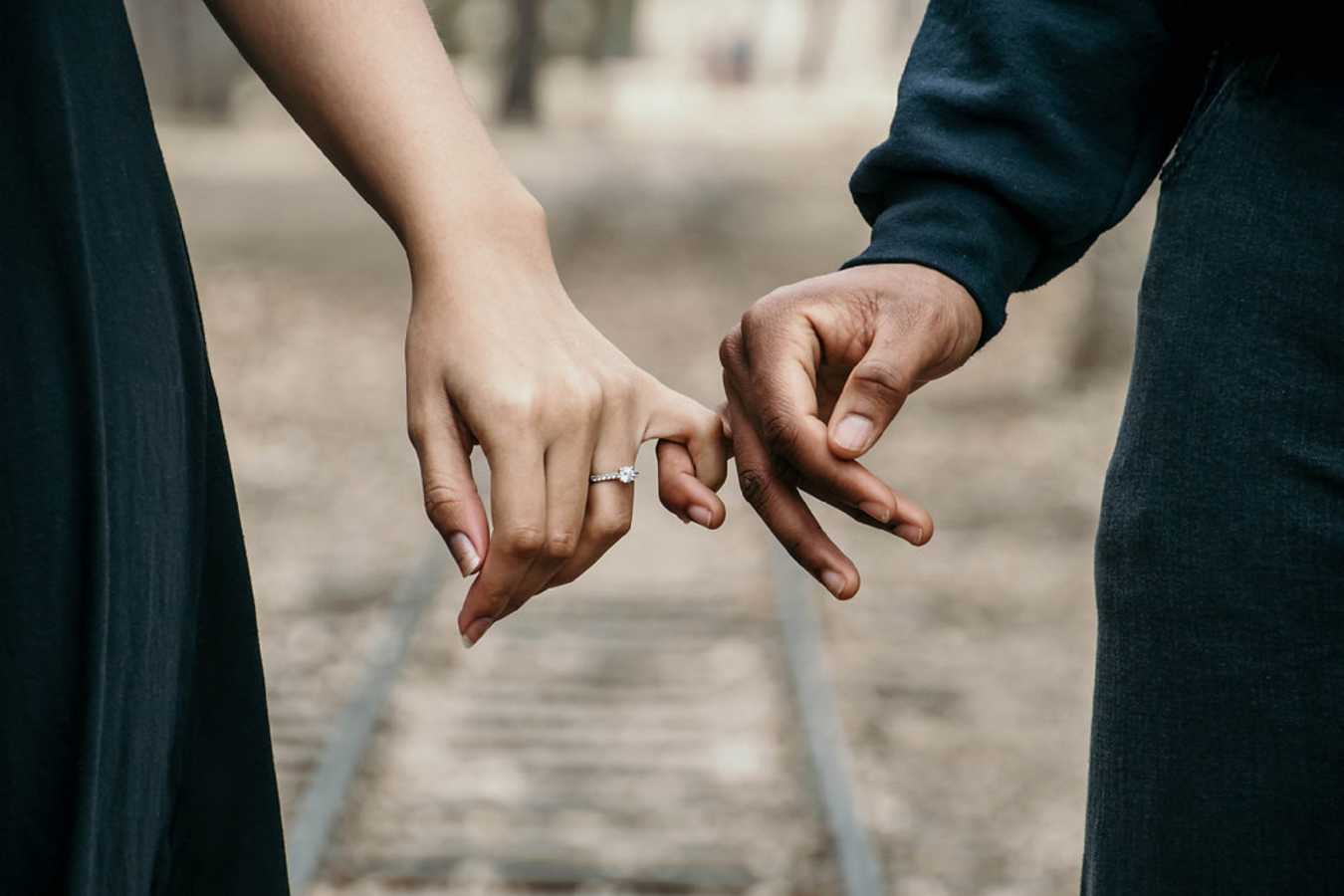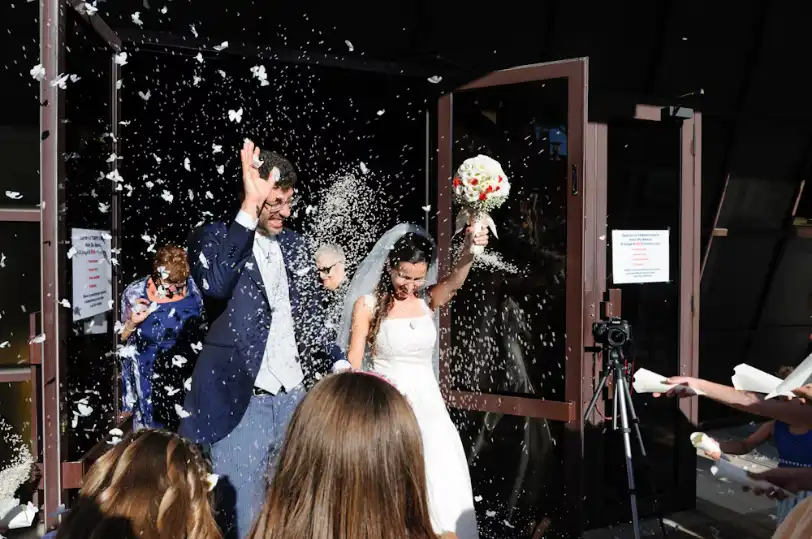As we navigate this romantic landscape, we’re in constant flux. One moment, we’re savoring a first date’s thrill; the next, pondering if this match could blossom into something serious. It’s a journey of shared laughter, stolen glances, and gradual self-revelation.
For many, the line between dating and commitment blurs. Is exclusivity assumed or earned? When do casual meetups transform into significant connections? These questions linger as single hearts get to know one another, each interaction a step towards potential partnership.
As we delve into the intricacies of modern dating, prepare to unravel the subtle distinctions that can make all the difference in your romantic journey.
The Dating Dilemma: When Does It Become a Relationship?
Decoding the dating landscape can feel like navigating a labyrinth. As two people explore their connection, the line between casual encounters and deeper bonds often blurs. This journey unfolds in stages, each bringing its own set of challenges and revelations.
Initially, interest sparks curiosity. You’re drawn to someone, eager to uncover layers of their personality. As you spend more time together, shared experiences shape your dynamic. You might feel a flutter when making plans, wondering if this could be the start of something significant.
As the connection grows, so does the emotional connection. You enjoy each other’s company beyond surface-level interactions. This is when expectations often come into play. Some might demand clarity early on, while others prefer to let things unfold naturally.
- Increasing vulnerability and self-disclosure
- Shift from individual to collective decision-making
- Growing desire for consistent communication
- Emergence of shared future aspirations
- Deepening trust and mutual support
The transition from dating to a more serious arrangement isn’t always linear. It’s common to experience unstable periods as you navigate feelings and define boundaries. Sincere communication with your prospective partner is essential.
As you progress, you might find yourself contemplating a romantic trip together or feeling increasingly comfortable sharing personal spaces. These often indicate growing stability.
Now that we’ve explored the basics, let’s see how cultural backgrounds can add a fascinating layer of complexity to the dating equation.
Cross-Cultural Dating: Navigating Different Relationship Rhythms
In the intricate dance of dating, cultural rhythms can create a symphony of harmony or a cacophony of misunderstandings. Consider the tale of Antonio and Olivia, whose diverse backgrounds orchestrated a unique stage for their budding connection. Antonio, steeped in Brazilian traditions, approached romance with the fervor of a samba, while Olivia’s Greek-American upbringing favored a more measured waltz.
This cultural pas de deux illuminates how deeply ingrained beliefs shape our expectations in matters of the heart. For Antonio, expressing affection early and intensely felt as natural as breathing. Olivia, however, preferred to take tentative steps, her caution a reflection of her multicultural upbringing.
Cultural diversity in dating isn’t about right or wrong—it’s about finding a shared rhythm that honors both partners’ unique melodies. Research shows that couples who successfully navigate cultural differences report higher relationship satisfaction and resilience.
The challenge lies not in determining whose approach reigns supreme, but in composing a harmonious duet. This process often involves moments of uncertainty as partners learn to synchronize their steps. It’s a delicate balance, requiring both to adjust their tempo without losing the essence of their cultural identity.
Navigating these differences can feel like attempting to dance to multiple songs simultaneously. Yet, it’s precisely this complexity that can lead to a richer, more nuanced connection. By embracing the diversity of their cultural scores, couples like Antonio and Olivia have the opportunity to create a beautiful, unique composition—a love song that blends the best of both worlds.
Experts suggest that couples getting to know each other across cultural lines should approach differences with curiosity and openness. This attitude fosters mutual understanding and can transform potential conflicts into opportunities for growth and deeper connection.
With cultural differences in mind, let’s explore how effective communication can bridge the gap between diverse dating expectations.
The Art of Communication in Cross-Cultural Dating
In the intricate tapestry of cross-cultural dating, effective communication serves as the golden thread weaving understanding and connection. Navigating the nuances of differing backgrounds requires a delicate balance of openness, empathy, and curiosity. Consider the art of active listening—a skill transcending linguistic barriers and fostering genuine comprehension.
When cultural expectations clash, approach conversations with a spirit of exploration rather than judgment. Discussing personal boundaries early can prevent misunderstandings about physical affection or social interactions. Embrace the opportunity to learn about your partner’s cultural norms, asking thoughtful questions that demonstrate respect for their heritage.
Non-verbal signals play an imortant role in cross-cultural communication. Be attentive to body language, as gestures can carry different meanings across cultures. When in doubt, seek clarification gently. Remember, vulnerability in expressing uncertainty can strengthen your bond.
Cultivate patience as you navigate potential misunderstandings. Cultural differences in communication styles—such as directness versus indirectness—may require adjustment. Embrace these challenges as opportunities for growth, fostering a deeper appreciation for diversity within your budding connection.
As we’ve seen, communication is key, but what about the unspoken language of attraction? Let’s decode the universal signals of interest.
Decoding Body Language: The Silent Language of Attraction
In the intricate dance of attraction, our bodies often speak volumes before words are exchanged. This silent language transcends cultural boundaries, revealing universal signals of dating interest. Let’s decode these subtle cues that spark connections across the globe.
| Body Language Cue | Cultural Interpretation |
|---|---|
| Sustained eye contact | Western: Confidence, interest Eastern: May be seen as aggressive |
| Leaning in | Universal: Engagement and attraction |
| Mirroring gestures | Global: Subconscious sign of rapport |
| Touch barrier break | Varies widely: From taboo to expected |
| Raised eyebrows | Universal: Surprise or interest |
While these signals offer insights, cultural nuances can significantly alter their meaning. In Japan, prolonged eye contact might be perceived as confrontational, whereas in Brazil, it’s often seen as a sign of genuine interest. The key lies in contextualizing these cues within cultural frameworks.
Research suggests that certain nonverbal behaviors, such as pupil dilation, are nearly universal indicators of attraction. These micro-expressions often bypass conscious control, offering authentic glimpses into one’s feelings.
As global interactions increase, understanding cross-cultural body language variations becomes crucial. It’s not just about recognizing signals; it’s about interpreting them correctly within diverse cultural contexts. This awareness can prevent misunderstandings and foster more meaningful connections in our increasingly interconnected world of dating.
Remember, while body language offers valuable insights, it’s just one piece of the puzzle. Combining these nonverbal cues with open communication and cultural sensitivity can help navigate the complex landscape of modern expectations in dating.
Now that we’ve mastered the art of nonverbal cues, let’s explore how technology is reshaping the landscape of modern romance.
From Swipe to Soulmate: The Modern Dating App Journey
In the digital age, finding love has transformed from serendipitous encounters to strategic swipes. Dating apps have revolutionized how we connect, turning smartphones into modern-day Cupids. This shift has profoundly altered the landscape of relationship formation, introducing a paradox of choice that both expands possibilities and complicates decision-making.
The journey from profile creation to meaningful connection is a nuanced dance of algorithms and human chemistry. Users navigate a sea of potential matches, each swipe carrying the weight of possibility. This abundance of options has reshaped expectations, sometimes fostering a “grass is always greener” mentality that can hinder genuine connection.
Yet, amidst the digital noise, success stories abound. Apps have bridged geographical and social divides, enabling connections that might never have occurred otherwise. They’ve also normalized open conversations about intentions and desires, encouraging clarity from the outset.
However, the app experience varies widely across cultures. In some societies, apps are embraced as efficient matchmaking tools, while in others, they’re viewed with skepticism. This cultural divergence adds another layer of complexity to cross-cultural dating in our increasingly globalized world. As users navigate these digital platforms, they must balance personal preferences with cultural sensitivities, creating a unique blend of tradition and technology in the quest for connection.
With the digital dating scene demystified, it’s time to address the elephant in the room: defining the relationship.
The ‘Define the Relationship’ Talk: When and How?
Broaching the “define the relationship” talk can feel daunting, especially when cultural expectations intertwine. This pivotal conversation demands finesse, timing, and sensitivity. Here’s how to navigate it gracefully:
- Assess readiness: Look for mutual emotional investment
- Set the scene: Choose a private, distraction-free environment
- Lead with vulnerability: Express your feelings openly
- Practice active listening: Allow your partner to share their perspective
- Address cultural nuances: Discuss how backgrounds shape relationship views
- Establish mutual goals: Create a shared vision for your future
Remember, timing varies across cultures. Some assume exclusivity early, while others view dating as an extended evaluation. The key lies in open communication about individual and cultural norms.
When initiating the conversation, focus on expressing feelings rather than making demands. Use “I” statements to share thoughts without pressure. For example, “I’ve truly enjoyed our time together and I’m interested in exploring a deeper connection. What are your thoughts on this?”
Ultimately, this dialogue aims to align expectations and forge a shared path forward. Approach it with empathy, patience, and an open mind to foster understanding and strengthen your bond.
Now that we’ve tackled the ‘talk,’ let’s explore the delicate balance between casual dating and committed relationships.
Navigating Exclusivity: The Gray Area Between Dating and Relationships
Exclusivity in dating is a nuanced concept that varies widely across cultures and individuals. In some societies, multiple dates imply commitment, while others view exclusivity as a milestone requiring explicit discussion. This gray area can lead to misunderstandings, especially in cross-cultural scenarios.
For instance, in many Western cultures, dating multiple people simultaneously is common until exclusivity is agreed upon. Conversely, in certain Asian cultures, the expectation of exclusivity may be implicit from the first date. Understanding these cultural differences is crucial for navigating early relationship stages.
Individual expectations also play a significant role. Some prefer establishing exclusivity early to build trust and intimacy, while others value exploring multiple connections before committing. The key lies in open communication about personal boundaries and desires.
Navigating exclusivity requires balancing cultural sensitivity, personal preferences, and clear communication. By openly discussing expectations and boundaries, couples can create a shared understanding that respects both individual needs and cultural backgrounds. This approach fosters a stronger foundation for a potential long-term dating relationship.
As we navigate the complexities of exclusivity, let’s discover how to create a unique relationship dynamic that honors both partners’ backgrounds.
Developing Your Unique Relational Rhythm: A Dance of Two Cultures
Crafting a unique relational rhythm is akin to composing a symphony where two distinct cultural melodies intertwine. As partners from diverse backgrounds, you’re creating a harmonious blend of traditions, values, and expectations. This process demands attentiveness, flexibility, and a willingness to learn.
In the dance of cross-cultural love, each step honors both roots and shared future, transforming differences into strengths that enrich the relationship’s tapestry.
Explore each other’s cultural celebrations, embracing the richness they bring. Share family stories, traditional foods, and cherished customs. Navigate differences by finding common ground while celebrating uniqueness. Remember, compromise isn’t about losing identity; it’s about forging a new, shared culture that respects both heritages.
Open communication is crucial in this delicate dance. Discuss expectations openly, addressing potential cultural clashes with curiosity and empathy. By doing so, you’ll create a relationship that transcends boundaries, a testament to love’s unifying power.
Now that we’ve explored the journey from dating to relationship, let’s address some common questions to further clarify this exciting transition.
FAQ
How long should you date before becoming exclusive?
The timeline for dating exclusivity varies widely, influenced by individual preferences and cultural norms. Some couples progress within weeks, others take months. It’s about mutual readiness and shared values, not a specific timeframe. Open communication aligns expectations, ensuring both partners are in sync.
What’s the difference between ‘talking’ and ‘dating’?
“Talking” and dating represent different stages of romantic exploration. “Talking” involves casual digital interactions without defined expectations. Dating implies more intentional meetups and growing emotional investment. Cultural differences significantly shape these relationship milestones, influencing how individuals progress from one stage to another.
Is it okay to date multiple people at once?
Dating multiple people simultaneously is a personal choice influenced by cultural norms and values. While it can broaden experiences, it requires honesty and clear communication. Ethical considerations and mutual respect should guide this decision.
How do you know if you’re ready for a relationship?
Assessing relationship readiness involves self-reflection. Are you emotionally available and self-content? Can you prioritize others’ needs? Do you have clear dating goals and boundaries? If sharing your life excites you, you might be prepared for deeper connection.
Can cultural differences affect dating expectations?
Cultural differences significantly shape dating norms, influencing courtship rituals and relationship pacing. Family involvement varies across cultures, as do communication styles and physical boundaries. Understanding these nuances is crucial for cross-cultural couples navigating modern romance’s complex landscape.
What are some signs that dating is turning into a relationship?
Subtle shifts often signal deepening connections in dating. Increased vulnerability, shared plans, and seamless integration into each other’s lives are key indicators. Mutual prioritization, consistent communication, and a growing partnership signify evolving intimacy. Physical affection may intensify, complementing emotional bonds.
How important is physical intimacy in defining a relationship?
Physical intimacy often reflects emotional closeness in relationships, but its importance varies across cultures and individuals. While some view it as essential, others prioritize emotional bonds. Open dialogue about intimacy dating expectations fosters understanding and strengthens connections between partners.
Should you discuss relationship labels early on or let things evolve naturally?
Balancing early label discussions with natural progression in dating hinges on comfort levels and cultural contexts. While immediate clarity can feel forced, letting things evolve risks misalignment. Finding middle ground respects both partners’ needs, fostering a connection that’s both organic and well-defined.
How can you communicate your relationship expectations effectively?
Effective dating communication requires honesty and clarity. Express desires openly, using “I” statements. Listen actively to your partner’s perspective. Discuss cultural influences on expectations and be willing to compromise. Regular check-ins maintain alignment as your connection evolves.
Is it possible to transition from casual dating to a serious relationship?
Transitioning from casual to serious dating requires mutual effort and clear communication. Gradually deepening intimacy and integrating into each other’s lives can naturally evolve a connection. Blending cultural traditions harmoniously adds richness to this journey, creating a unique partnership that honors both backgrounds.











